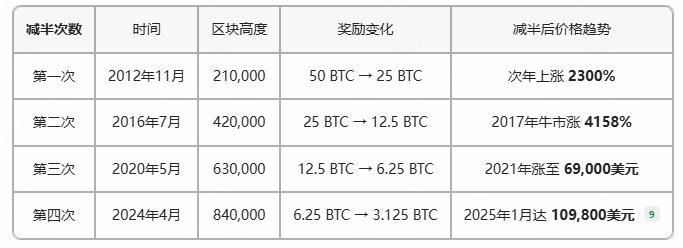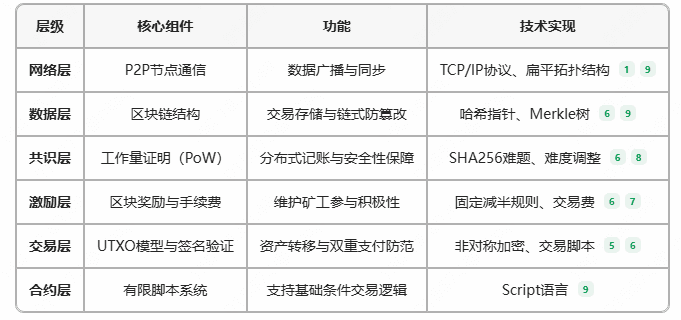What is the principle behind the fixed output of Bitcoin?
The principle of fixed Bitcoin output originates from its predefined mathematical rules and economic model design. The core mechanism is to achieve total control through periodic halving, ultimately approaching a limit of 21 million coins.
The issuance of Bitcoin follows a strict mathematical formula:
1. Initial Setting:
The reward for the genesis block (2009) was 50 BTC, and the reward is halved every 210,000 blocks (approximately 4 years).
The block generation time is fixed at 10 minutes (achieved through dynamic adjustment of mining difficulty).
2. Geometric Decrease:
The output every 4 years forms a geometric sequence:
First 4 years: Total output = 50 × 210,000 = 10.5 million coins.
Second 4 years: Reward halved to 25 BTC, total output = 25 × 210,000 = 5.25 million coins.
Continuing this way, the rewards decrease to 12.5 BTC, 6.25 BTC, 3.125 BTC...
3. Limit Calculation:
This geometric sequence converges to 21 million coins, expected to completely stop new coin issuance in 2140.
Every time 210,000 blocks are mined, the system automatically executes a reward halving, written into the underlying Bitcoin code and cannot be tampered with.

How is the system implemented?
1. Decentralized Network
Bitcoin adopts a peer-to-peer (P2P) network architecture where all nodes are equally interconnected without a central server. New transactions and blocks are broadcasted throughout the network, and nodes communicate via TCP/IP protocol to achieve data synchronization.
2. Asymmetric Encryption
Users manage assets through public keys (public addresses) and private keys (control). Transactions require private key signatures to verify ownership, and public keys are used for address generation, ensuring transaction security and identity anonymity.
New blocks are formed by recording the hash value of the previous block, and any tampering will cause subsequent block hashes to become invalid, ensuring historical data cannot be tampered with. Transaction data is generated through a Merkle tree to create a unique root hash, achieving efficient transaction verification and data integrity verification. Miners perform brute force searches for a random number (Nonce) so that the double SHA256 hash of the block header meets the difficulty target (number of leading zeros). The difficulty value is dynamically adjusted to ensure a new block is generated on average every 10 minutes.
The first miner to solve the problem receives:
Block Reward: Newly issued bitcoins (initially 50 BTC, halved every 210,000 blocks).
Transaction Fees: The total fees of transactions within the block.
Nodes always treat the longest valid chain as the main chain; shorter chains are discarded in the event of a fork to prevent double spending.

What is the current level of computing power in the Bitcoin world?
The current total Bitcoin network computing power is approximately 93.28 EH/s (data from May 2025), equivalent to 93.28 × 10¹⁸ hash calculations per second. The total computing power of the global Top 500 supercomputers is about 1.6 × 10¹⁵ times/second (data from 2024), making Bitcoin's computing power about 58,300 times that. Bitcoin mining power accounts for over 70% of the global resources available for hash calculations.
If I have 51% of the global computing power, do all the bitcoins belong to me?
